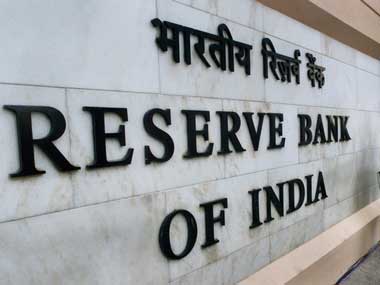On 30 March, in an interview with Firstpost, P Rudran, the then managing director and CEO of Asset Reconstruction Company (India) Ltd (ARCIL), the largest ARC of stressed assets in the country, said the state of bad loans in Indian banking system “looks” pathetic. It will be difficult for banks, Rudran said, to recover money even if the economic recovers since the value of underlying assets have eroded drastically. “Even a recovery in the economy may not do much for these banks because the NPA accounts have lost money and the units have become unviable. The absence of a proper bankruptcy law makes the process of recovery that much more difficult.” Rudran’s comments are significant since Arcil is the largest entity in the country that deals with chronic bad debt cases. These comments also pretty much sums up the seriousness of the asset quality problem faced by Indian banks. Total stressed assets on the books of Indian banks currently constitute nearly 14 percent of the total loans, raising questions on the health of Indian banks. [caption id=“attachment_2434606” align=“alignleft” width=“380”]  Reuters[/caption] The Reserve Bank of India (RBI) has been cautioning banks and the government about the worsening bad loan scenario. The central bank even let banks use part of the emergency provisions recently to use for provisioning purpose on bad loans, something a central bank resorts to only in extreme scenario. On Tuesday, one of the deputy governors at the Reserve Bank of India (RBI), R Gandhi, repeated the warning, saying banks needs to “urgently” reduce bad loans. He also said that the central bank is considering a proposal to limit the number of participants in a consortium to encourage banks to carry out better independent credit checks. But for the battered banking industry, this is hardly a wake-up call for the simple reason that the problem is very well known to the banking system, just that the solutions are lacking. If one takes a look at the present stressed asset scenario, bad loans in the banking system can be categorized into three parts: 1) Cases of reckless lending by banks to several companies on account of intense competition in the market, which have now turned bad thanks to a prolonged phase of economic slowdown and subsequent slow-recovery phase; 2) Large loans given to crony promoters, who wouldn’t pay back even though they have the capacity to do so (known as wilful defaulters). Such wilful defaults constitute a large chunk of bank NPAs. In most cased, banks aren’t in a position to recover money from these highly influential promoters, also due to frequent intervention by the judiciary in the loan-recovery process; 3) Directed lending by public sector banks to state-owned companies and high-risk sectors such as agriculture. In the first and second cases, banks will have to wait until economic recovery takes firm hold translating into better corporate performance and cash flows. This can happen only if the government addresses the structural issues that delays projects (land acquisition, availability of power and environmental clearances). There is a need for overhauling the current recovery mechanism to speed up corporate loan recovery. For this, finance minister Arun Jaitley needs to walk his talk on promulgating a strong bankruptcy law. Presently, banks’ recovery process takes years. In most cases promoters drag lenders to courts to delay recovery. Even with a powerful weapon like wilful defaulter tag, banks are unable to act effectively to recover their money (Kingfisher is a classic example). The third is a sort of arm-twisting strategy used by the government on its banks. This is unlikely to end unless these entities cease to be owned by the government. For years, these lenders have been being used by ministers as the extended arms of the government for schemes sponsored by them. Banks have also lent heavily to state-run power distribution companies following government diktats. When lack of tariff reforms and operational losses hurt discoms, the repayment to banks also stopped adding to the bad loan pile. State-run banks cannot perform with no freedom to operate in a professional, independent manner, competing with private banks. State-run banks in particular, are facing huge capital-related challenges due to their bad loan troubles. The government has promised to infuse Rs 75,000 crore in state-run banks over a few years and wants them to tap markets raise the balance funds required. This package is unlikely to work since the capital requirement of banks is higher than what the government can manage. Also, it will be difficult for banks with cracked balance-sheets to convince investors to put money on the table. The government will have to let go off the majority stake in these banks and open these entities to private investors as recommended by the P J Nayak panel. A big part of the problem — the tendency to hide bad loans — has been addressed by the RBI when it withdrew the regulatory forbearance on newly restructured loans and pressing for early recognition of stressed assets in the industry by forming joint lenders forum. But, that’s only the beginning of a major clean-up process. It isn’t easy to address the present bad loan problems of Indian banks since the rot runs deeper, unless the government wakes up to the problem and act with urgency to save the banking sector.
It isn’t easy to address the present bad loan problems of Indian banks since the rot runs deeper, unless the government wakes up to the problem and act with urgency to save the banking sector
Advertisement
End of Article


)

)
)
)
)
)
)
)
)



